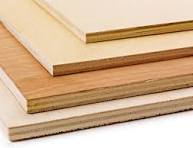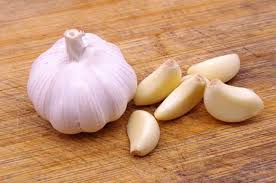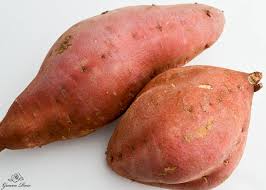Plywood Manufacturing in Nigeria; The Feasibility Report

Plywood is a vital engineered wood product extensively used across construction, furniture, and packaging industries. In Nigeria, plywood production has witnessed significant fluctuations, transitioning from a thriving industry in the 1960s to near collapse in the 1990s. Despite abundant raw materials and a growing domestic market, Nigeria remains heavily dependent on plywood imports.
Historically, plywood production dates back to ancient Egypt, where thin wood layers were bonded together to create stronger sheets. The modern plywood industry took shape in the early 20th century, with large-scale manufacturing in Europe, the United States, and later Asia. Today, plywood is a fundamental component in construction, often replacing solid wood due to its durability, versatility, and cost-effectiveness.
Various plywood types are available, including softwood, hardwood, marine, laminated, commercial, and specialty plywood, each designed for specific applications such as construction, furniture manufacturing, and fire-retardant or flexible plywood solutions.
The global plywood market, valued at USD 50.2 billion in 2024, is projected to reach USD 74.5 billion by 2033, growing at a compound annual growth rate (CAGR) of 4.5% from 2025 to 2033. This expansion is driven by rapid urbanization, infrastructure development, increasing demand for lightweight and flexible wood products, and the booming furniture and interior décor industries.
In the 1960s, the Nigerian government established nine integrated plywood factories with a total capacity of 126,000 cubic meters to reduce import dependence and boost exports. However, poor maintenance, mismanagement, and lack of investment led to their decline, and by the 1990s, most mills had shut down.
Plywood production in Nigeria peaked at 89,000 cubic meters in 1985 but steadily declined thereafter. Since 1997, annual production has averaged 56,000 cubic meters, with 2023 figures slightly lower at 55,900 cubic meters. Meanwhile, domestic demand has surged to 965,000 cubic meters per year, compelling Nigeria to rely on imports from China, South Korea, India, the UAE, and Austria.
The Nigerian plywood market, valued at USD 8.81 billion in 2023, is expected to grow at a CAGR of 3.3%, reaching USD 11.05 billion by 2030.
Despite high import reliance, the country possesses rich timber resources, including Mahogany, Iroko, Gmelina, and Teak, particularly in states such as Ondo, Ogun, Ekiti, Edo, Cross River, and Akwa Ibom. However, issues such as deforestation, illegal logging, and inadequate forestry management hinder efficient resource utilization.
Several challenges impede the growth of Nigeria’s plywood industry, including poor infrastructure, high production costs, outdated machinery, and unreliable power supply, making local manufacturing less competitive.
Additionally, dependence on foreign plywood suppliers, inadequate government incentives, and poor policy implementation exacerbate the situation. Environmental concerns linked to deforestation and illegal logging further complicate timber procurement, while smuggling and the influx of low-quality plywood products undermine the market for locally manufactured alternatives.
Despite these challenges, Nigeria’s plywood industry offers significant investment opportunities, particularly in the production of Sumo Marine Plywood, Orbit Premium Plywood, Goldplex Marine, MR Grade Okume Commercial Plywood, and Melamine Laminated Plywood (HDF).
Rising demand from the construction, real estate, and furniture industries presents a viable market for domestically produced plywood. Government policies promoting local content in the wood industry further incentivize investment. Sustainable timber plantation development and the adoption of modern manufacturing technologies—including automated veneer peeling, resin treatment, and hot press technology—can improve production efficiency and quality.
Additionally, Nigeria has the potential to become a leading plywood exporter within the ECOWAS region, tapping into regional markets while reducing its dependency on imports.
With increasing demand, abundant raw materials, and supportive government policies, Nigeria’s plywood industry holds immense untapped potential. Establishing a modern plywood manufacturing plant focusing on Sumo Marine Plywood, Orbit Premium Plywood, Goldplex Marine, MR Grade Okume Commercial Plywood, and Melamine Laminated Plywood (HDF) could revitalize the sector, reduce import dependence, and stimulate economic growth.
Investors should prioritize sustainable raw material sourcing, advanced production techniques, and strategic partnerships with the construction and furniture industries. With the right approach, Nigeria can reclaim its position as a major plywood producer in Africa, fostering job creation, economic development, and sustainable forestry practices.
This report evaluates the financial viability of establishing a plywood production plant in Cross River State, Nigeria. The proposed plant will produce Sumo Marine Plywood, Orbit Premium Plywood, Goldplex Marine, MR Grade Okume Commercial Plywood, and Melamine Laminated Plywood (HDF), with a daily production capacity of 100 cubic meters.
Table of Contents
EXECUTIVE SUMMARY 1.0 Business Overview 1.1 Description of the Business 1.2 Vision and Mission Statement 1.3 Business Objective 1.4 Value Proposition 1.5 Critical Success Factor of the Business 1.6 Current Status of Business 1.7 Description of the Business Industry 1.8 Contribution to Local and National Economy 2. Marketing Plan 2.1 Description of the Products 2.2 Product Packaging and Delivery 2.3 The Opportunity 2.4 Pricing Strategy 2.5 Target Market 2.6 Distribution and Delivery Strategy 2.7 Promotional Strategy 2.8 Competition 3. Production Plan 3.1 Description of the Location 3.2 Raw Materials 3.3 Production Equipment 3.4 Production Process 3.5 Production Cost 3.6 Stock Control Process 3.7 Pre-Operating Activities and Expenses 3.7.1 Operating Activities and Expenses 3.8 Project Implementation Schedule 4.0 Organizational and Management Plan 4.1 Ownership of the Business 4.2 Profile of the Promoters 4.3 Management and Governance 4.3.2 Management Support Units 4.4 Details of Salary Schedule 5. Financial Plan 5.1 Financial Assumption 5.2 Start-Up Capital Estimation 5.3 Source of Capital 5.4 Security of Loan 5.5 Loan Repayment Plan 5.6 Profit and Loss Statement 5.7 Cash flow Statement 5.8 Viability Analysis 6.0 Business Risks, Mitigation Strategies and SWOT Analysis 6.1 Business Risks and Mitigation Strategies 6.2 SWOT Analysis
Project Specification:
Additional Info
Get this Report
Direct bank transfer
To order the report, Please do pay the sum of ₦1,850,000 into
Account Name : Foraminifera Market Research Ltd
Account Number : 274 20 569 37
Account Name : Foraminifera Market Research Ltd
Account Number : 101 76 603 95
Account Name : Foraminifera Ventures
Account Number : 011 66 066 32
Make your payment directly into our bank account. Please use your Order ID as the payment reference. Your order will not be shipped until the funds have cleared in our account.
Instructions
After payment call us on 01 -29 52 413 / 08033782777 or email us at foraminiferamarketresearch@yahoo.com with the payment details. After payment confirmation, the soft copy of the report would be sent to you within 24 hours.



